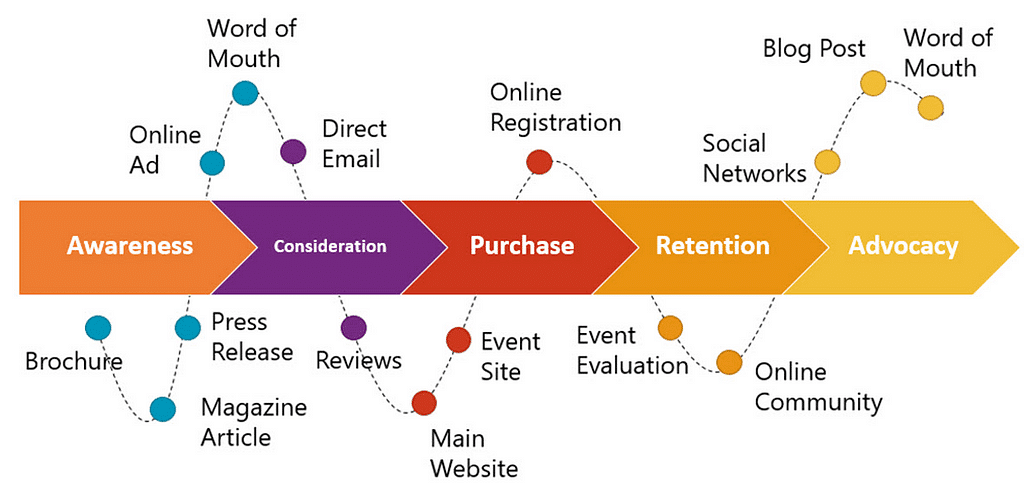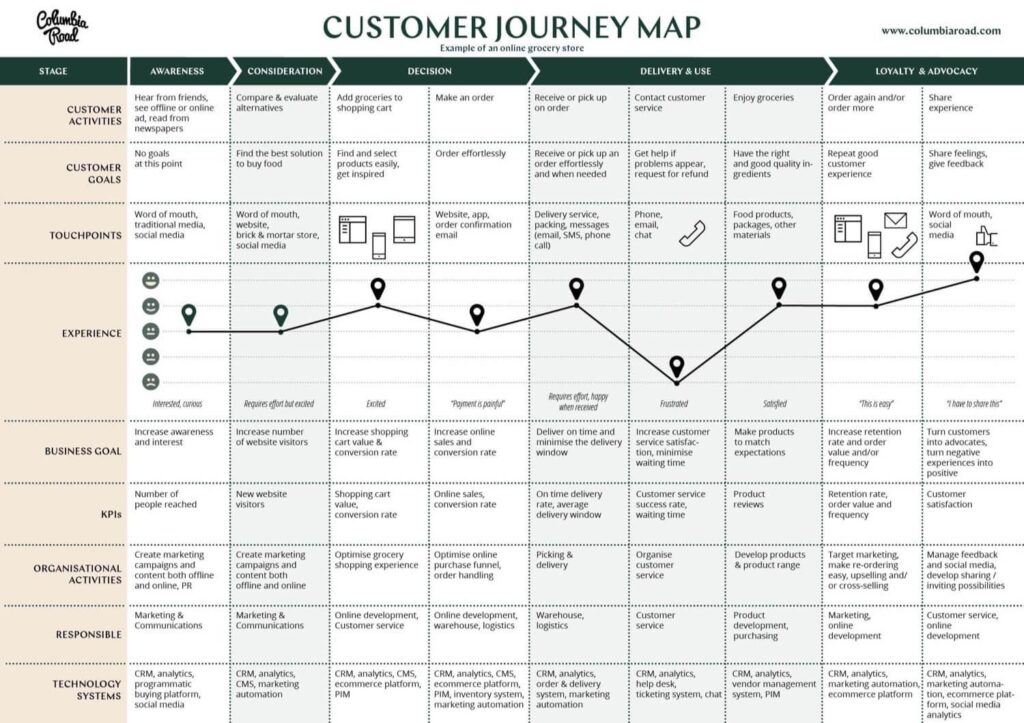We’ve all heard the age-old adage that it’s not the destination but the journey that matters. In ecommerce, it may be the destination that drives the journey (because you want to convert leads into sales) but understanding the path consumers take to purchase your product or service is essential.
Ecommerce has steadily been growing at an exponential rate, but the pandemic has pushed it even further. Global sales are expected to hit $6.5 trillion in 2023 as everyone gets more and more comfortable shopping online. So, the market is big. To stand out, ecommerce businesses need to tempt consumers away from competition, and the best way to do this is through a seamless ecommerce customer journey.
What is the ecommerce customer journey?
Pick a product and purchase it, right? But wait, it’s not that simple. With thousands of companies offering a similar product, how do you choose? Most likely, you will opt for a brand that understands it’s not just a faceless transaction and a product you are buying, but a whole experience.
Consumers these days want to truly connect with brands that understand their pain points and can offer a whole package that creates a smooth and rewarding journey.
The ecommerce customer journey follows the different stages of how consumers connect with your product or service, from their initial search to beyond the final purchase. It’s all about how you turn a curious consumer into a loyal follower.
Why is the ecommerce customer journey so important?
When a consumer chooses you, they are choosing to invest in your values, your mission, and everything you can bring to the table. This is how you grow your business from just another brand offering something to establishing a long-term relationship with consumers and growing through positive reviews and word of mouth. Here are a few more benefits of taking the time to understand and map your ecommerce customer journey.
- Understand your market
- Streamline the experience
- Reduce pain points
- Set realistic goals
- Plan for the future
The five stages of the ecommerce customer journey
You can map your ecommerce customer journey through five stages:
1. Awareness
During the awareness stage, your customer will be trying to solve a problem and is actively seeking a solution. They are researching the problem, curating information, and figuring out an answer. A potential customer can’t even start out on their journey with you unless they know about your brand. This is where it’s important to figure out how a customer gets to you – search engine optimization (SEO), word of mouth, social media – this helps you to figure out how the customer arrives at your door.
2. Consideration
During the consideration stage, potential customers may be shopping around for solutions. For example, if they’re looking for a way to eat healthier, they may be browsing Google to see what diets and recipes are out there. They may stumble upon the idea of a meal kit delivery service and decide that this is a good way to introduce healthier eating options into their life.
Now they know what they want to do, they can start to look a little deeper into their options. They may Google different options and check out social media pages or see what other people have to say. As an ecommerce business, this is your chance to pull them towards you via engagement strategies.
3. Decision
The decision part of the process is crunch time. It’s when a customer decides which company or product they want to buy to solve their problem. At this point, it’s important to effectively communicate why your exact product or service is the one they want.
Understanding the different customer touch points will help you to get ahead of the game. Even though you may think that the decision is the end point of the journey, there’s still the execution part of the plan to happen. This is when your ecommerce brand will need to start following through on the promises made and where your marketing, delivery, and customer service skills should all be aligned.
4. Retention
While a single purchase is great, it’s even better if you have a customer that keeps coming back for more. Retention is the golden word when it comes to longevity in business practice.
When you retain a customer, it’s because they are incredibly satisfied with the experience. Keeping that experience excellent every time is another challenge, but it’s important as it means that happy customers will start to share the news with their peers.
5. Loyalty
When you have made the sale, enjoyed repeat custom, and now you have the customer advocating on your behalf, this is where your business can enjoy the highest lifetime value of a converted customer. Brand loyalty means that your customers are engaging across all your touch points and even voluntarily helping your business to thrive.
How to map the ecommerce customer journey
Mapping out the ecommerce customer journey is a great way to visualize and acknowledge the experience a customer will have with you. It invites you to put yourselves in the shoes of the customer and helps you to highlight your strengths and weaknesses and where there are gaps in your business plan. Here’s how you can start to map out this journey:
Create a buyer persona
Understanding who your customers are is the first step in getting to grips with the buyer’s journey. Creating a buyer persona will help you understand who your customer is and how they got to you.
It’s also important to understand what your customers’ pain points are and what solutions they are seeking. Sketching out a buyer persona based on existing data can help you to build a full profile of who you are targeting and will help inform your decision making process every step of the way.
Research
Know your audience, know your competition, and know your data. These are essential factors in understanding how to streamline your buyer’s journey and how to deliver at the top of your game. Explore your competitors in depth. Create focus groups consisting of your main demographic and track what works and what doesn’t.
You can find out a lot about how customers interact with your brand by tracking your data. Seeing which pages they stay on, where your bounce rate is, and getting to grips with which touch points deliver a good return and which don’t perform well – this is all valuable research that can help set better business goals.
Make goals
With a deeper understanding of your target market and an idea as to what touchpoints are working, you have the foundations of your ecommerce customer journey map. From this information you may be able to ascertain what your customer wants, what part of the journey makes them happy and what frustrates them, and where improvements can be made. When setting goals, you want to continue to be in the head of your customer – what are their goals and paint points and how do these align with your own.
Visualize
Hopefully you should have scores of information, so the trick now is turning that information into an easily digestible visual aid. You can have one customer journey map for the whole experience, or if you’re a larger company working with different teams, you can have a journey map for each team – for example the social media marketing team may have their own map.
How ecommerce brands can improve their customer journey
- Create touchpoints that serve a purpose at every stage
- Optimize your website and mobile sites
- Continually test your site for speed and glitches
- Keep gathering data
- Be proactive in customer support
- Personalize interactions
An ecommerce customer journey map can help you to understand customers, improve traffic, track habits, engage consumers, nurture relationships, and increase conversions. Mapping the ecommerce customer journey may seem time consuming, but it’s invaluable.
Investing in an ecommerce marketing company with the expertise to help you with that roadmap can deliver the kind of big picture thinking that can guide your business to the next level.
Want to talk through your ecommerce customer journey? Contact us for a free consultation.





